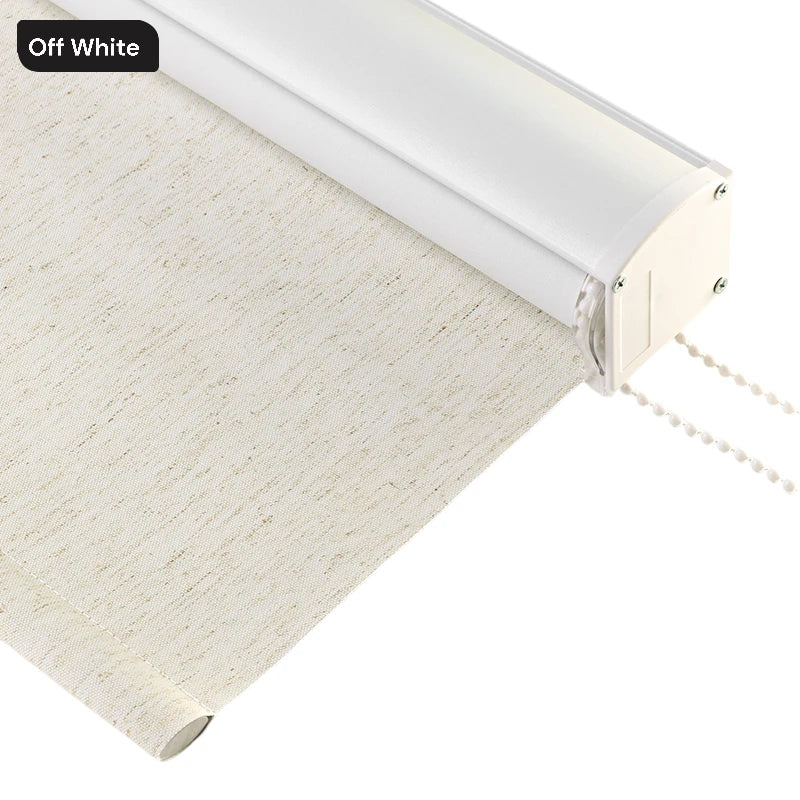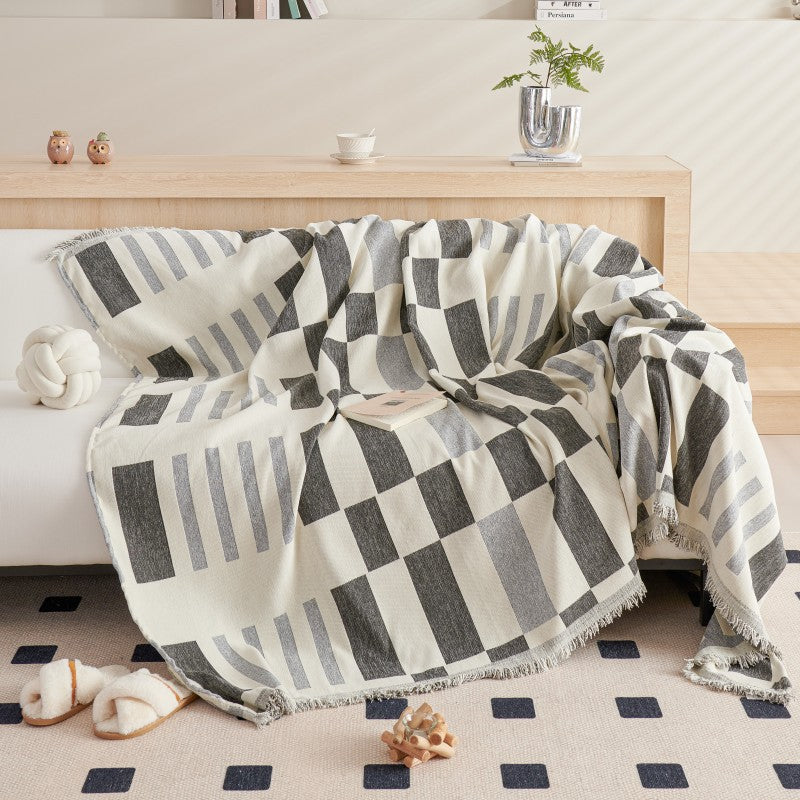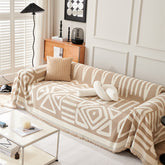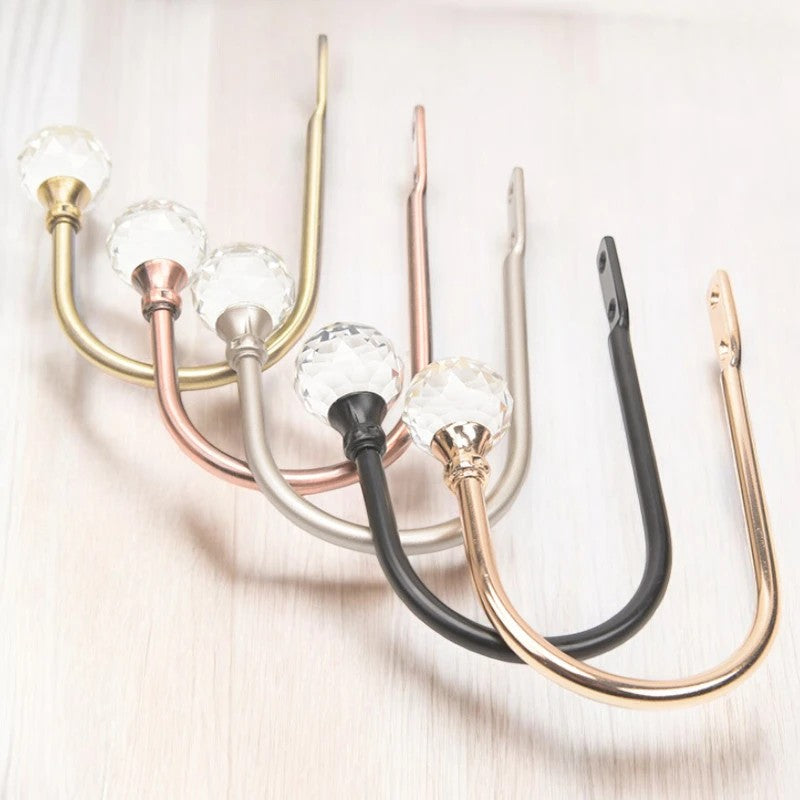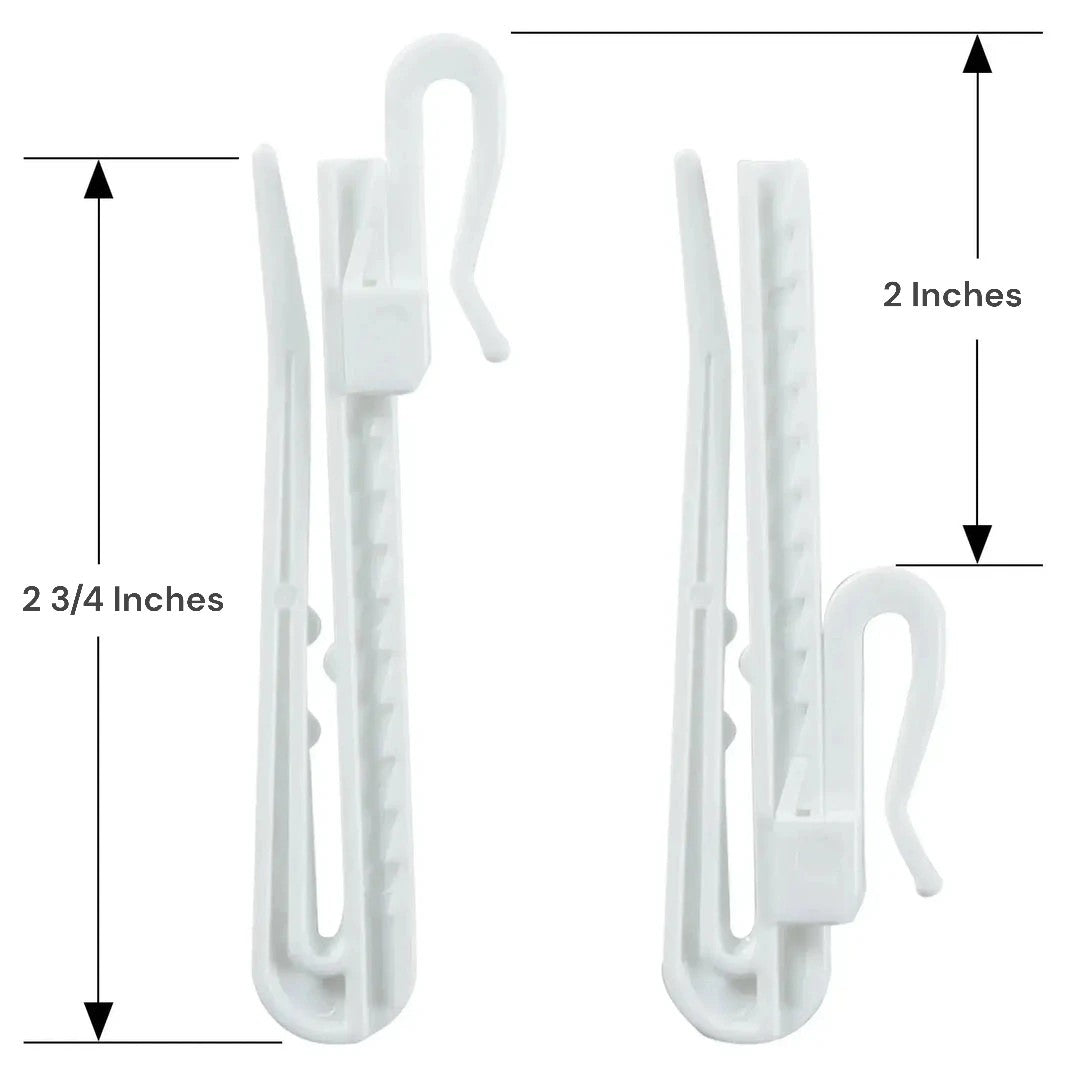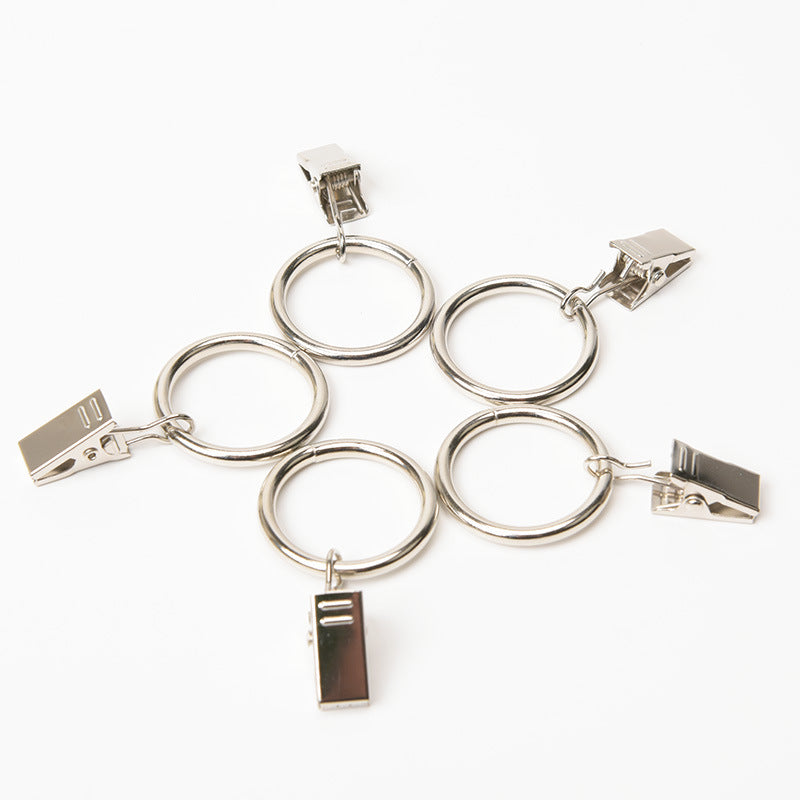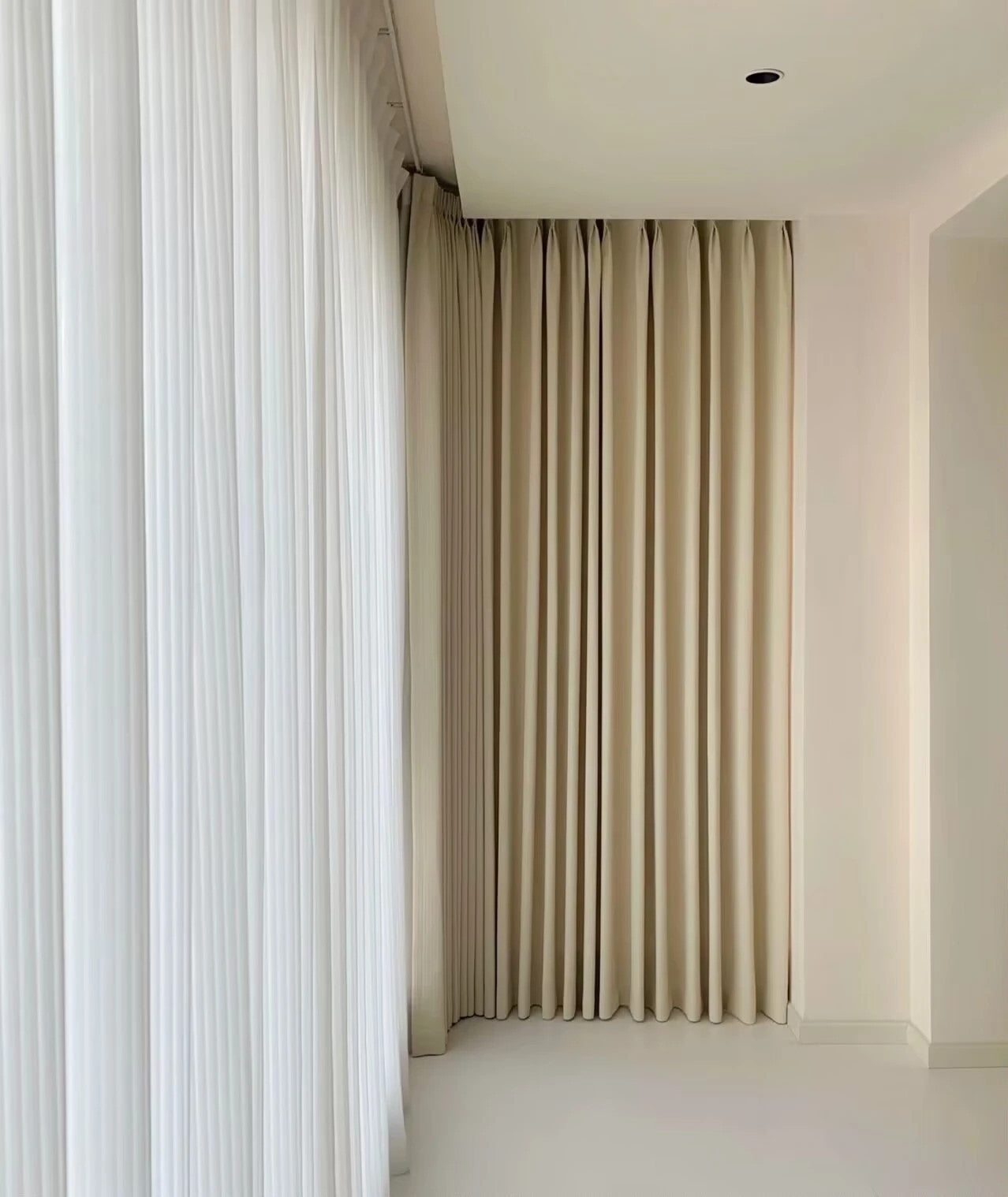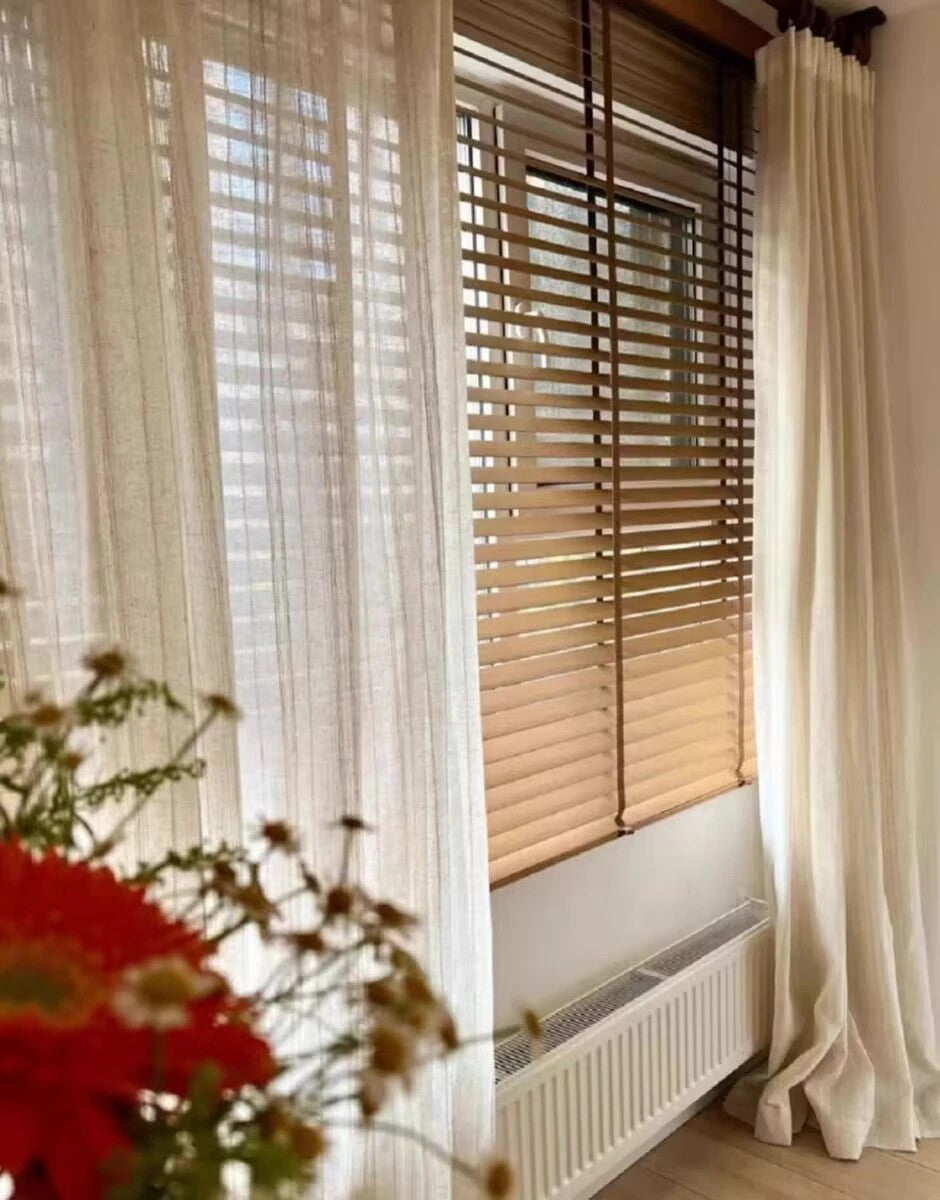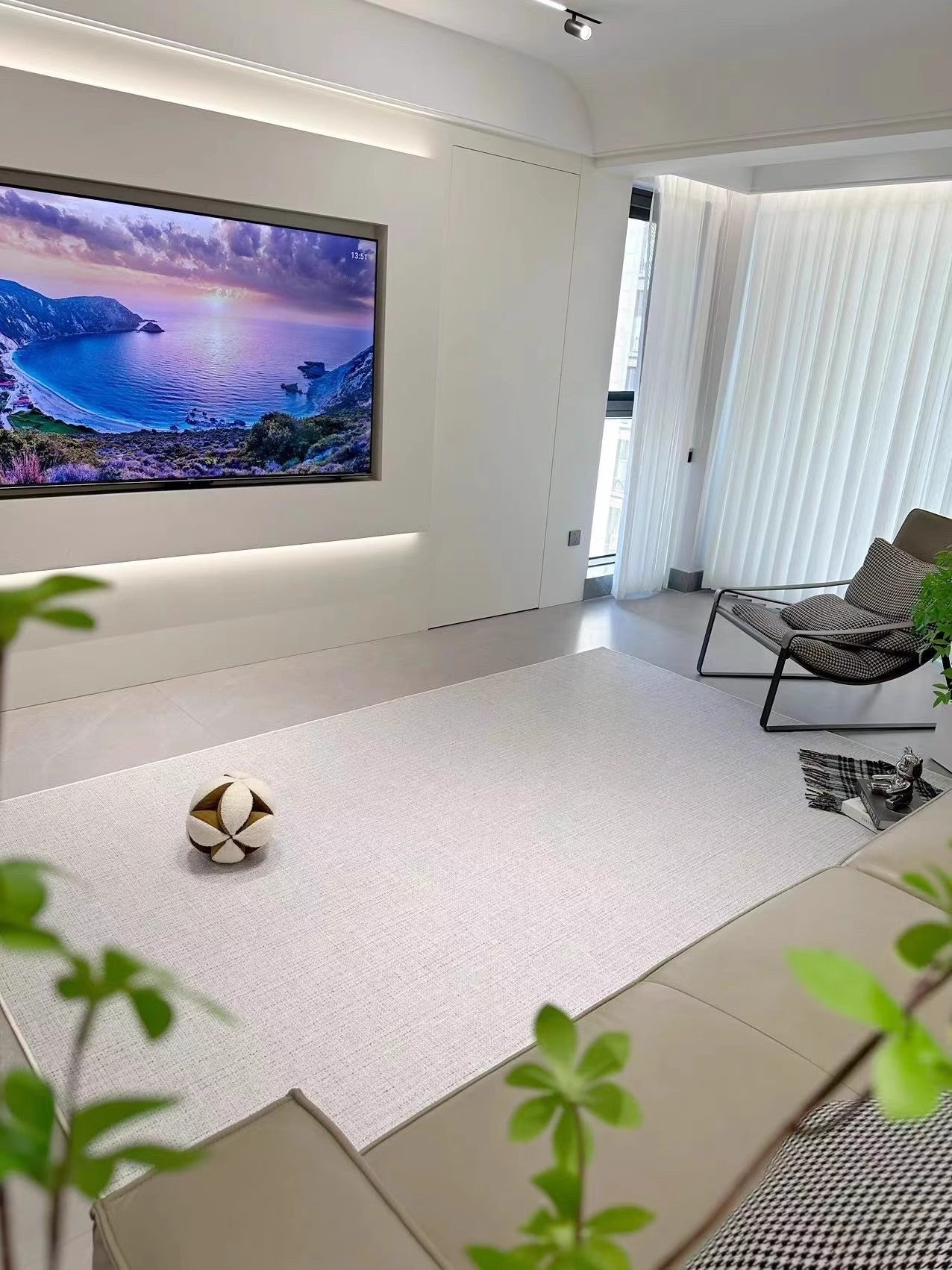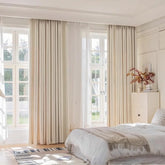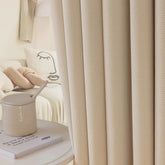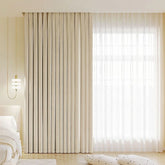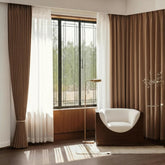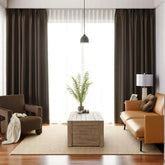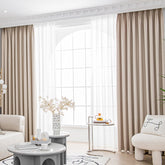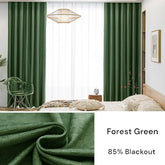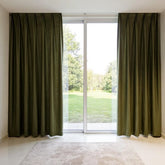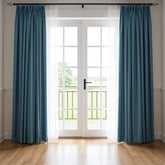Mastering Your Curtain Fabric Selection: A Guide
Choosing the right curtain fabric can make a world of difference in enhancing the appeal and functionality of your windows.
At Dolcewe, we understand the importance of selecting the perfect fabric for your curtains, and that's why we've created this comprehensive guide to help you navigate the process with ease.
- Consider fabric density, weight, and opacity for privacy, natural light, and insulation.
- Choose a fabric color and type that complements your home décor.
- Take into account curtain length and select appropriate hardware.
- Ensure fabric durability, maintenance, and special functionalities meet your needs.
- Mastering curtain fabric selection requires considering all aspects to create the perfect look for your space.
Understanding the Importance of Fabric Density, Weight, and Opacity
When it comes to curtain fabric selection, paying attention to density, weight, and opacity is crucial in achieving the desired level of privacy and sunlight filtration.
The density of the fabric determines how effectively it blocks light and provides privacy. Thicker fabrics offer more privacy and block out more light, while lighter fabrics allow for a brighter ambiance.
The weight of the fabric should be taken into consideration when you are seeking additional privacy and insulation. Heavier fabrics provide better insulation and are ideal for rooms that require more privacy, such as bedrooms or home offices. On the other hand, lighter fabrics allow for more natural light to filter through, creating an airy and open atmosphere.
The opacity of the fabric plays a significant role in determining privacy levels and filtering harsh sunlight. Holding the fabric sample against a window can help gauge how well it filters light. This can be particularly important in rooms where direct sunlight can cause glare or damage to furniture.
| Fabric Type | Density | Weight | Opacity |
|---|---|---|---|
| Cotton | Medium | Light to Medium | Varies |
| Silk | Medium to Heavy | Light to Medium | Varies |
| Linen | Light to Medium | Light | Varies |
| Lace | Light | Light | Translucent |
The fabric density, weight, and opacity are key factors to consider when selecting curtains. They not only impact privacy levels but also play a role in how much natural light enters the space. By understanding these factors, homeowners can make informed decisions that suit their needs and preferences." - James at Dolcewe
By carefully considering the density, weight, and opacity of curtain fabrics, homeowners can choose the perfect fabric to create the desired atmosphere in their spaces. Whether you prefer a cozy and private environment or a light-filled room, understanding these fabric characteristics will guide you toward making the right fabric selection for your curtains.
Choosing the Right Color and Fabric Type for Your Curtains
The color and fabric type of your curtains play a significant role in creating a cohesive and stylish look for your home.
When selecting curtain fabric, it's important to consider the overall decor and desired ambiance of the room. Darker colors are ideal for high-traffic areas as they hide dirt and dust well, while lighter colors create an airy and open feel. To add visual interest, consider using patterns and textures that complement the room's design.
When it comes to fabric type, there are various options to choose from.
- Cotton is a popular choice due to its versatility and availability in different patterns and styles. It offers a casual and comfortable look that suits a wide range of decor styles.
- Silk, on the other hand, provides a luxurious and elegant appearance but is more prone to sun damage.
- Linen is lightweight and perfect for a relaxed and natural decor style. It adds a touch of sophistication while creating an effortless and breezy atmosphere.
- Alternatively, lace curtains offer a translucent and airy ambiance but provide less privacy.
In addition to color and fabric type, it's essential to consider the quality and reliability of the supplier. Opt for reputable suppliers like Dolcewe that offer a wide selection of curtain fabrics and have a track record of delivering high-quality products. This ensures that you have consistent access to your chosen fabric and can maintain the overall look of your curtains over time.
By carefully selecting the color and fabric type for your curtains, you can transform the look and feel of your home. Create a space that reflects your personal style and enhances the aesthetic appeal of every room.
| Color | Fabric Type |
|---|---|
| Darker colors | Ideal for high-traffic areas and hide dirt and dust well. |
| Lighter colors | Create an airy and open feel. |
| Cotton | Versatile, available in different patterns and styles. |
| Silk | Provides a luxurious and elegant appearance but is prone to sun damage. |
| Linen | Lightweight, perfect for a relaxed and natural decor style. |
| Lace | Offers a translucent and airy ambiance but provides less privacy. |
Considering Length and Hardware Selection
Finding the perfect length for your curtains and selecting the right hardware can greatly enhance the overall appearance and functionality of your window treatments.
When it comes to curtain length, there are various options to choose from, ranging from tier-length to floor-length. The length of your curtains will depend on several factors, including the height of your windows and the desired style. Shorter curtains are ideal for smaller windows or when you want to showcase decorative hardware, while longer curtains create an elegant and dramatic look. At Dolcewe, all curtains are available in custom sizes, whether you need them extra wide or extra long. The best part? They all start at just $26.99!
In terms of hardware selection, it's important to choose rods and accessories that can support the weight and length of your curtains.
Heavier curtains require stronger rods and brackets to ensure they are properly secured. On the other hand, lighter curtains can be paired with more delicate hardware options. Consider the design and finish of the hardware as well, as it should complement the overall aesthetic of the room. For a cohesive look, choose hardware that matches or complements other elements such as furniture finishes or metal accents.
To help you visualize the different curtain lengths and hardware options, we've created a simple table below:
| Curtain Length | Hardware Recommendation |
|---|---|
| Tier-Length | Smaller rods or tension rods |
| Café-Length | Rods with decorative finials |
| Apron-Length | Standard curtain rods |
| Floor-Length | Heavy-duty rods with brackets |
| Puddle-Length | Longer rods or decorative tiebacks |
Remember, the length and hardware of your curtains should not only be aesthetically pleasing but also functional. The right combination will allow you to control light, privacy, and insulation while adding a touch of style to your windows.
By considering the various curtain lengths and hardware options, you can create a customized window treatment that perfectly fits your space and enhances its overall look. Whether you opt for tier-length café curtains or floor-length drapes, selecting the right hardware will ensure your curtains are securely and stylishly displayed.
Take the time to explore different options and consider consulting with a professional if needed. Let's continue our journey to master curtain fabric selection!
Durability, Maintenance, and Special Functionalities to Consider
When selecting curtain fabric, it's important to take into account factors such as durability, maintenance, and special features that can elevate your window treatments.
Durability is crucial, especially for curtains that will be exposed to direct sunlight or high levels of wear and tear. Look for high-quality curtain fabrics that are fade-resistant and can withstand frequent cleaning.
Maintenance is another key consideration. Some fabrics may require dry cleaning or special care instructions, while others can be easily machine-washed at home. Consider your lifestyle and the level of maintenance you're willing to commit to before choosing a fabric.
Special functionalities can greatly enhance the functionality of your curtains. For example, thermal insulation fabrics can help regulate the temperature in your space, reducing energy costs. Stain-resistant fabrics are ideal for areas prone to spills or stains, such as kitchens or dining rooms. Additionally, blackout fabrics can block out unwanted light, making them perfect for bedrooms or home theaters.
By carefully considering durability, maintenance, and special functionalities, you can ensure that your curtain fabric not only looks beautiful but also meets your specific needs and requirements. Take the time to research different fabric options and consult with experts to make an informed decision.
Summary:
- Choose durable curtain fabrics that are fade-resistant and can withstand frequent cleaning.
- Consider the maintenance requirements of the fabric and choose one that aligns with your lifestyle.
- Explore special functionalities such as thermal insulation, stain resistance, and blackout options to enhance the functionality of your curtains.
- Research different fabric options and consult with experts to make an informed decision.
Curtain Fabric Durability Guide
| Fabric Type | Durability Rating |
|---|---|
| Cotton | High |
| Polyester | High |
| Linen | Moderate |
| Silk | Low |
| Velvet | High |
Image:
Conclusion
By carefully considering factors such as fabric density, weight, color, length, and maintenance, homeowners can confidently choose the perfect curtain fabric that enhances both the aesthetics and functionality of their windows.
When it comes to fabric density, thicker fabrics offer more privacy and block more light, while lighter fabrics allow more natural light to filter through. The weight of the fabric also plays a role in privacy and insulation, with heavier fabrics providing more of both. Considering the opacity of the fabric is important for controlling the harshness of sunlight and maintaining privacy. Holding a textile sample in front of the window can help visualize how well it filters light.
In terms of color and fabric type, it's important to choose a fabric that complements the overall home décor. Darker colors are ideal for high-traffic rooms as they hide dirt and dust well. Cotton is a versatile and popular choice, offering various patterns and styles. Silk provides a luxurious look but is prone to sun damage. Linen is lightweight and perfect for a casual decor style, while lace offers a translucent and airy ambiance but less privacy.
Consideration should also be given to the length of the curtains and the hardware selection. Curtain length options range from tier-length to floor-length, and the hardware should match the weight and length of the curtains. Patterns and textures in the fabric can be used to create visual interest and enhance the overall look of the room.
Lastly, fabric durability, maintenance requirements, special functionalities, and the reliability of the supplier should be taken into account. Some fabrics are more prone to fading and wrinkling, so homeowners should choose fabrics that are durable and easy to maintain. Budget and special functionalities such as thermal insulation or stain resistance should also be considered when making the final selection. Reliability in the availability of the chosen fabric is important to ensure consistency in the long run.
By considering all these factors, homeowners can master the art of selecting curtain fabric, creating the perfect ambiance and functionality for their windows, and enhancing the overall look of their space.
FAQ
Q: What criteria should I consider when choosing curtain fabric?
A: When selecting curtain fabric, important criteria to consider include fabric density, weight, and opacity. These factors affect privacy, natural light, and insulation in a room.
Q: How do I choose the right color and fabric type for my curtains?
A: It's important to choose curtain colors that complement your home's overall décor. Fabric type depends on personal preferences and the desired look and functionality. Popular choices include cotton, silk, linen, and lace.
Q: What should I consider when it comes to curtain length and hardware selection?
A: Consider the length of the curtains, ranging from tier-length to floor-length, and choose appropriate hardware based on the weight of the curtains. Patterns and textures can also be used to create visual interest.
Q: What factors should I consider for fabric durability and maintenance?
A: Some fabrics are more prone to fading and wrinkling than others, so it's important to consider durability and maintenance requirements. Additionally, special functionalities like thermal insulation or stain resistance should be taken into account.
Q: How do I ensure reliable availability of the chosen curtain fabric?
A: It's important to choose a reliable supplier to ensure consistent availability of the curtain fabric you choose for your space.



